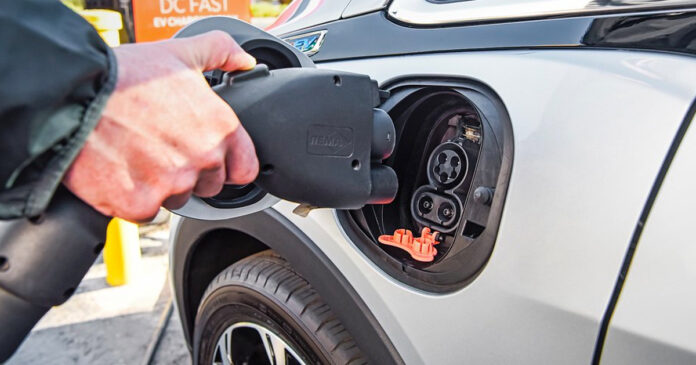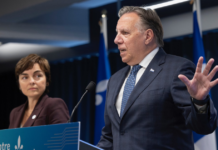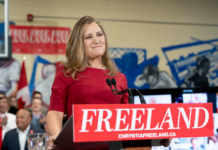Federal government subsidies for two Ontario electric vehicle battery plants will total $2.82 billion dollars and, according to Parliamentary Budget Officer Yves Giroux, take 20 years to see that money again.
On Tuesday, a report published by the Parliamentary Budget Office (PBO) projected it will take 20 years for the government to break even on the subsidies the government has given to secure manufacturing jobs in the EV sector.
In April, Prime Minister Justin Trudeau announced that the federal government would award $13.2 billion dollars to Volkswagen to build a new EV battery plant in St. Thomas, Ont.
Following Trudeau’s announcement, Innovation Minister François-Philippe Champagne said that in less than five years, the project will have matched the value of the subsidy.
Taxpayer advocates are less convinced.
“Politicians said they’d get the money back in five years, but the PBO report is clear: it’ll be 20 years before we see if these deals even break even,” said Franco Terrazzano, federal director of the Canadian Taxpayers Federation.
“But the government has a terrible track record on corporate welfare so taxpayers should be worried about whether they’ll ever see a real return on investment.”
In July, the federal government and the Ontario provincial government announced up to $15 billion dollars worth of subsidies for Stellantis-LG Energy Solutions to build an EV battery manufacturing plant in Windsor, Ont.
When announced, the stated plan was to have the federal government cover two-thirds of the money for subsidies and have the Ontario government cover the remaining third.
The initial estimates for when these subsidies would be paid off were based on a report by the Trillium Network for Advanced Manufacturing and Clean Energy for Canada in 2022, a non-profit think tank.
The report estimated that the Volkswagen subsidies would break even after 3.3 years, based on the support from Ottawa and considering every link in the supply chain like mineral exploration, mining, assembly and recycling.
The PBO however, said that their numbers differed from the think tank’s because they don’t believe that all aspects of the supply chain should be included but rather only the revenues generated by the cell and module manufacturing that the subsidies were allotted for in the first place.
“The government was very optimistic in assuming that all this ecosystem surrounding electric vehicles would be developed as a result of these two plants and the subsidies that the government provided,” said Giroux in an interview with the Globe and Mail on Tuesday.
“So, a very optimistic assumption, considering that it’s a highly integrated auto sector in North America, and the investments could very well take place without these subsidies.”
The period of time it will take to have the government break even on these subsidies is much longer than what was initially promised, argued Giroux, closer to 20 years.
“We estimate that federal and provincial government tax revenues generated from the Stellantis-LGES and Volkswagen EV battery manufacturing plants over the period 2024 to 2043 will be equal to the total amount of production subsidies,” said Giroux in his report.
“That is, the break-even timeline for the $28.2 billion in production subsidies announced for Stellantis-LGES and Volkswagen is estimated to be twenty years, significantly longer than the Government’s estimate of a payback within five years for Volkswagen.”
Giroux said it’s important to put forth the kind of analysis that will allow Canadians to properly understand the merit of this spending so that it can be compared to other problems the country is facing.
“What else could they do with that money that could also generate wealth in this country?” said Giroux. “There’s other things that could be done with such a significant amount.”
Innovation Minister Champagne said that Canadians and the auto sector will still benefit from these deals, despite the difference in figures from the PBO report.
“While the Parliamentary Budget Officer’s report does not capture many of the broader economic impacts on the supply chain, it does highlight, once again, that these investments will generate economic benefits far greater than our government’s contribution,” said Champagne.
Champagne claims that the government’s investments will create thousands of jobs across the entire EV supply chain.”
Canadian Taxpayers Federation Ontario director Jay Goldberg said it’s possible that taxpayers may not see the money spent at all, even after the twenty year period.
“In reality, governments will get this money back somewhere between 20 years from now and never,” said Goldberg. “The PBO report is proof taxpayers shouldn’t trust politicians when they promise the moon with their corporate welfare deals.”





















